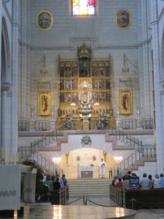As I’ve mentioned, my wife and I took a trip to Spain last month to celebrate our first anniversary. I’m not going to inflict all my vacation photos on you, but we did see some sights that are relevant to the kind of thing I usually write about on Daylight Atheism. If you’re interested in seeing more, click through to view the rest of the post.
On our first day in Spain, we did some sightseeing in Madrid. Our first stop was the Palacio Real, the official state residence of Spain’s king, Juan Carlos I. He was the handpicked successor of the military dictator Francisco Franco, the one whom Franco had intended to carry on his authoritarian right-wing Catholic theocracy after his death. Instead, Juan Carlos initiated Spain’s transformation into a secular and democratic country – so even though I’m anti-monarchy as a matter of principle, I can’t help feeling admiration for him for that. (Plus, there was this incredibly amusing exchange between him and Hugo Chávez.)
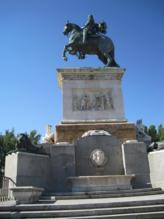 |
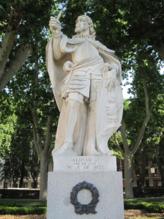 |
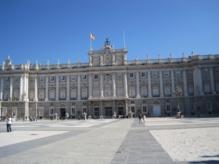 |
Across the street from the Palacio Real is Almudena Cathedral, the seat of the archdiocese of Madrid. By European standards, it’s brand-new; its construction began in the early 1880s (and was completed in 1993, which is a typical construction time). In 2004, it was the site for the wedding of Prince Felipe, Spain’s crown prince, to his wife Letizia, princess of Asturias. Compared to Spain’s other churches, it’s nothing special – we saw others that were much larger – but I still have to confess: I love cathedrals. I can’t help admiring the craftsmanship, the colors of light in stained glass, and the vast, lofty spaces – even if I think the beliefs of the builders were complete nonsense.
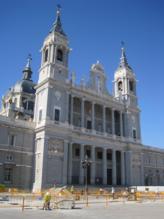 |
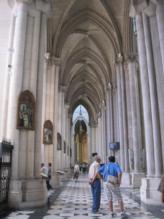 |
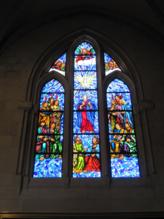 |
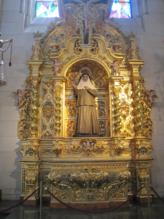 |
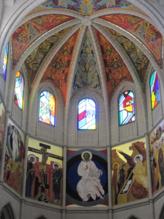 |
Of particular note was the altar. It wasn’t nearly as large or as ornate as some of the others we saw later on the trip, but it does give you some idea of the vast wealth that’s routinely on display in Spanish cathedrals. (There was a service going on while we were visiting and we couldn’t get too close, hence the slight blurriness of the zoom.)
The wealth of the cathedral and the royal palace was a sharp contrast with something else we saw in Madrid: the main city square, the Puerta del Sol, was taken over by protesters who are angry about bank bailouts and crushing unemployment, particularly among young people. They’ve set up a tent city and festooned the square with posters and banners explaining their grievances:
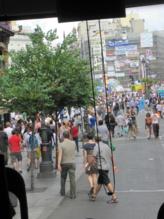 |
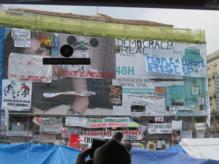 |
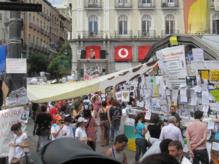 |
I can’t fault the protesters for their passion, but I wonder if their efforts weren’t counterproductive. While we were there, Spain had local elections in which the governing Socialist party fared disastrously, while the conservative opposition, the PP, made major gains. I strongly suspect that it’s because thousands of people like this, who are probably the Socialists’ usual base, stayed home in protest. (That said, the conservative party in Spain is probably about as liberal as the Democrats here in the U.S., if not more so.)
Next: The city of Toledo and a museum, once a synagogue, bearing witness to the once-flourishing cultural diversity stamped out by Spanish monarchs.
